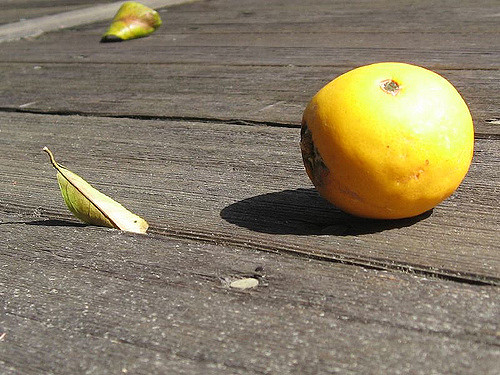
I’ve lived in Paris for over four months now. I like it here. I like how boulangeries, marchés and théâtres sprinkle the entire city in loved and overused clichés.
I like the cafés and restaurants that spill onto cobbled sidewalks. I like the idea that I can go to a museum every weekend for three years without going to the same museum twice (I read somewhere that there are over 150 museums in Paris. You do the math).
I like the rues and avenues and how they echo with thousands of years of known and unknown history in every booted, sneakered, high-heeled step. I like the leaning facades of buildings, and their different shades of light: bright white, off white, beige, cream, cotton, moon, pearl, custard, sand. My building is a shade of tiramasu. The building opposite is coloured the inside of an almond.
My favourite thing about Paris, that is, Paris the city—not the Paris that shapes my every day (my favourite thing about that Paris is Rémi)—are the rooftops. Dotted with out-of-use pot-shaped chimneys, a view of Paris’ rooftops can be enjoyed from many vantage points, including Printemps on Boulevard Haussman, Parc de Belleville and Centre Pompidou. If you go to the bed section of BHV, in Le Marais, as I discovered not long after my arrival, you can look out the eastern windows and enjoy a small but pretty patch of rooftop landscape.
(I especially like the rooftops during twilight, when a crescent moon hovers luminously above them. It’s the kind of thing you see, growing up, in picture books about Paris. How nice to come here and discover that they’re real.)
The floors and walls in my 1950s apartment are crooked. Are you familiar with the Japanese concept of wabi-sabi? If you ask a Japanese person about wabi-sabi they will likely have trouble explaining what it is to you as the breadth and sensitivity of this way of seeing is difficult to define. Leonard Koren, author of Wabi Sabi for Artists, Designers, Poets & Philosophers, a book said to be what introduced wabi-sabi to the West, penned this widely cited English definition:
“Wabi-sabi is a beauty of things imperfect, impermanent, and incomplete. It is a beauty of things modest and humble. It is a beauty of things unconventional.”
Wheel-thrown dimpled cups are an example of wabi-sabi. Death is an unconventional other.
In Paris you will see children’s drawings everywhere, and not just in homes. I’ve seen drawings taped to restaurant windows and waiting room walls. They are usually mounted somewhere prominent, such as next to an Ouvert or Ferme sign, or beside a menu. These drawings are wabi-sabi.
The floors and walls of my apartment are wabi-sabi, too.
Rémi (my favourite Paris thing that shapes my every day, remember?) smiles only when he means it. He doesn’t so much have a “resting bitch-face”; rather, Rémi has a “resting I-will-kill-your-children-face.” So, at first sight, he can look intimidating. However, Rémi is like many Parisians in that once you build a rapport he is nice and smiley. You will see his heart beating on his sleeve. That’s the thing about the French: they’re very earnest. When they’re pleased their eyes twinkle like stardust and their mouths spread into goofy, uncontainable grins. They don’t know how to hide their pleasure. “Why would you want to hide your pleasure?” they would exclaim.
When Rémi and I were new (we still are new, but we were newer, then) he let his love stand there for itself. He didn’t try withhold it, despite knowing that I could use it against him. He—shockingly, admirably—let his vulnerability breathe. That’s what the rest of us often fail to do, no? We smother our vulnerability by hiding our love because we don’t want our love used against us.
It’s only of late that I have been comfortable admitting that I like Paris. Before, when someone asked me how I felt about it, I played my happiness down. “It’s not bad,” I would say, implying that some aspect of it was. And some aspects are. The sunless winter days have stretched on for longer than I am used to; I hate the crowded metro, a dank underground that tends to reek of piss and vomit and armpit; and the bureaucracy really is as bad as they say.
But that’s not why I hesitated to answer honestly and wholeheartedly. Those aforementioned things are bothersome but they are also manageable. I hesitated because I hide my love. I don’t want it used against me, either by a failure in work or friendship or romance, or by a refusal to be granted another visa, or even—what a terrible reality to admit—by terrorism.
Does this sound familiar to you?
We hide and we withhold and we lose our authenticity. We thereby reduce ourselves to less than we are. This is the price we pay.
Here’s where the wabi-sabi aesthetic can guide us:
In our imperfect, impermanent and incomplete situations we can work to see the beauty. I say “work” and not “choose” because choosing is not always easy. Working isn’t easy, either, but it seems more tangible than choosing and is therefore probably a lot more actionable for most.
Work wabi-sabi into your life. And I mean all of it—not just into the quaint and whimsy of crooked walls and dimpled cups. Work it into the fear of impermanence, the pain of losing face. Work it into the chance of loss and rejection. Work it deep into the bones of your anguish over having an imperfect temperament and imperfect body and incomplete map of your impermanent life.
I’ll be doing the same in Paris.
~
Author: Amanda Celeste
Editor: Travis May
Photo: Flickr/Duff Axsom











Read 0 comments and reply